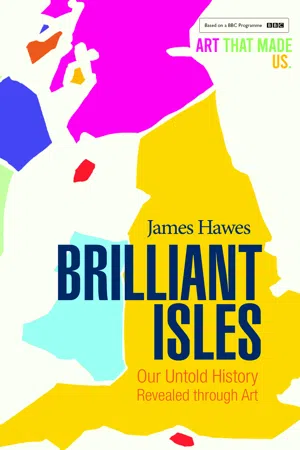
- 192 pages
- English
- ePUB (mobile friendly)
- Available on iOS & Android
About This Book
EXPLORE THE HISTORY OF THE BRITISH ISLES THROUGH 80 EXTRAORDINARY CREATIONS, FROM BEOWULF AND THE BAYEUX TAPESTRY TO BANKSY, STORMZY, AND BEYOND
A companion book to the landmark BBC series, Brilliant Isles tells the story of these islands through art, music, buildings and literature – the creations of visionaries, mavericks and rule-breakers who responded to their times and shaped the future. Whether read cover-to-cover or dipped into, this is a vibrant, surprising and witty guide to a unique culture, by one of our sharpest writers
'Hawes's view of English history is sharp and vivid and extremely persuasive'
PHILIP PULLMAN
'At last a chance to get to grips with the entire history of England, and all in a few hours!'
MAIL ON SUNDAY
'An engaging, informative sprint through the story of our little island'
INDEPENDENT
'thorough and absorbing... [Hawes] brings the story right up to date, able to step back from the current madness with admirable clarity
NEW EUROPEAN
'A fantastic read. I would recommend it to anyone.'
PAT KENNY, Newstalk Ireland
'Such a thought-provoking read...
Frequently asked questions
Information
1. LIGHTS
IN THE DARKNESS
Spong Man

Y Gododdin

The Staffordshire Hoard

Table of contents
- Title Page
- Contents
- Epigraph
- Introduction
- 1. LIGHTS IN THE DARKNESS
- 2. REVOLUTION OF THE DEAD
- 3. QUEENS, FEUDS AND FAITH
- 4. TO KILL A KING
- 5. CONSUMERS AND CONCIENCE
- 6. RISE OF THE CITIES
- 7. WARS AND PEACE
- 8. BRILLIANT ISLES
- Image Credits
- About the Author
- Also by James Hawes
- Copyright